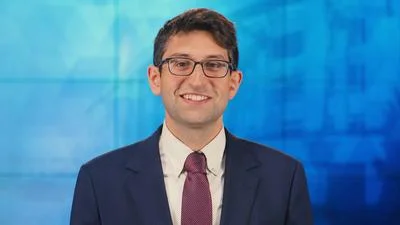WASHINGTON, DC - The Environment Subcommittee, chaired by Rep. John Shimkus (R-IL), today held a hearing examining the New Source Review (NSR) permitting program within the Environment Protection Agency (EPA).
The NSR preconstruction permitting program is intended to protect air quality by ensuring that appropriate control technologies are installed on new and modified power plants, factories, and other major sources of emissions. However, requirements have become complicated, burdensome, and uncertain since program inception, which presents increasing challenges that can be an impediment to modernization and expansion of manufacturing and industrial operations as the economy picks up.
“Not only is the NSR process costly and time-consuming, it is also complex and uncertain. Right now on EPA’s website, there are nearly 700 posted guidance documents that an applicant may need to be aware of when seeking a preconstruction permit, stated #SubEnvironment Chairman Shimkus. “The NSR program is holding back needed investment in the nation’s infrastructure, industrial capacity, and manufacturing capabilities. I am confident through targeted changes to the NSR program, we can not only reduce the unnecessary burden imposed on industry, but also maintain and enhance the NSR program’s important protections for the environment and public health."
Jeffrey R. Holmstead, Partner, Bracewell LLP, highlighted the plight many communities now face because of the NSR program, stating, “Over the years, the NSR program has become a complicated mess that makes it more difficult for companies to do things that we should all want them to do - like maintaining the reliability and safety of their facilities and making them more efficient. In some parts of the country, it effectively bans the construction of new facilities even if they use state-of-the-art pollution controls and would not have a meaningful impact on the environment - and even though the communities where they would be located desperately want them built."
Kevin Sunday, Director of Government Affairs, Pennsylvania Chamber of Business and Industry, echoed Mr. Holmstead’s testimony, stating, “In practice this regulatory construct discourages existing manufacturing (and the attraction of new facilities) in non-attainment areas, despite historic improvements in air quality. … The costs of compliance with NSR are significant - for nonattainment areas, sources must deploy Lowest Achievable Emissions Rule (LAER) technology, which are the most expensive type of control, and/or obtain Emissions Reductions Credits (ERCs) - credits which have become increasingly expensive and in short supply as NAAQS requirements have been ratcheted down in recent years."
Paul Noe, Vice President Public Policy, American Forest and Paper Association and American Wood Council, focused on the need to reform the NSR program, commenting, “In enacting the Clean Air Act, I do not believe that Congress intended to create such an arcane NSR permitting system using unrealistic assumptions and modeling to impede permits as manufacturers strive to grow and innovate. … To further the twin purposes of the Clean Air Act, our goal should be sustainable regulation - regulation that addresses environmental and economic needs."
Stuart Spencer, Associate Director, Arkansas Department of Environmental Quality, Office of Air Quality, testifying on behalf of the Association of Air Pollution Control Agencies, suggested any NSR reform should address the following issues, “Revise the emissions increase test under NSR to match the hourly test under NSPS. Clarify the factors to be considered in determining whether a project is a routine maintenance, repair, or replacement activity. Create an exemption from NSR for efficiency projects. Codify the information in the EPA Administrator Pruitt’s December 7, 2018 memo… Clarify the definition of a ‘source’ in order to ensure that geographically separate facilities are not artificially combined to create a single major source for NSR purposes. Define when projects need to be aggregated for NSR purposes. Clearly identify what types of projects should be considered as changes in the methods of operation."
“Effective clean air regulations should allow the nation to continue to expand its manufacturing and industrial capacity," concluded full committee Chairman Greg Walden (R-OR). “But these goals are undermined when regulatory requirements no longer reflect practical reality. As a result, American communities are deprived of both continued environmental improvements and economic prosperity. Our goal, is to develop responsible, targeted reforms that will provide for economic growth, while maintaining environmental protections. Doing this will ultimately benefit all American workers and consumers."
The Majority Memorandum, witness testimony, and an archived webcast are available online HERE.




